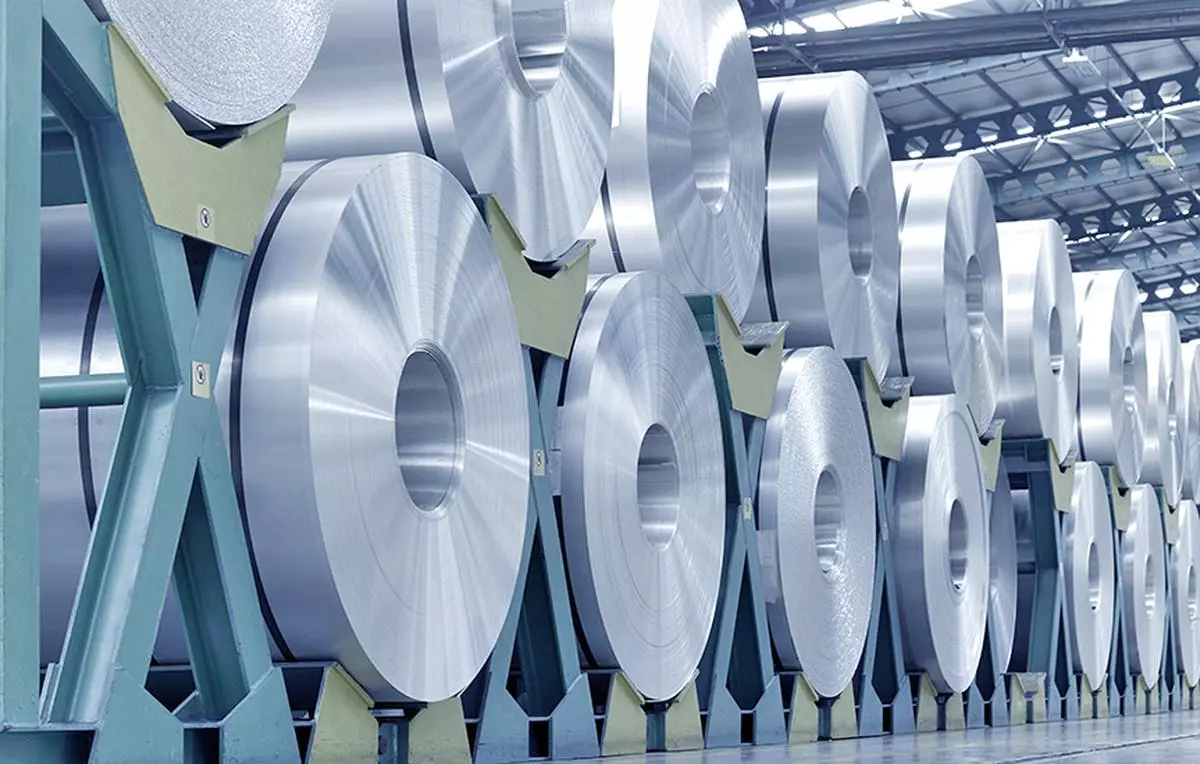After iron, aluminum is the second most widely used metal globally. Aluminium is the world’s most used non-ferrous metal – and for good reasons. In its use phase, aluminium delivers significant energy and CO2 savings that enable the decarbonisation of other sectors, including mobility and transport, buildings, packaging and clean energy technologies. The endless recyclability of our metal further contributes to decarbonisation and the circular economy. Because aluminium can be recycled over and over again, it is no surprise that 75% of all aluminium ever produced is still on the market today!
According to the International Aluminium Institute (IAI) forecasts that aluminium demand will increase by 70-80% by 2050. Aluminium is at the heart of Europe’s green energy transition. It is used in almost all energy generation, transmission, and storage technologies: from wind and solar power to alternative fuel cells and hydrogen production to high-voltage cables and batteries. Not only is aluminium highly conductive and lightweight, but thanks to its corrosion resistance, it is also the ideal material for harsh outdoor conditions. It is easy to install, low maintenance, and durable, ticking all the boxes for renewable energy generation systems. Aluminium alloys consistently exceed other metals for mechanical stability, dampening, thermal management, and reduced weight.
Hydro is a leading industrial company that builds businesses and partnerships for a more sustainable future. To reach the Paris climate agreement and keep the global temperature increase below 1.5 degrees, we need to decarbonize energy systems, produce for circularity and recycle resources already in use. Aluminium is a key enabler in the green transition, but production must become emission free. Here is how to get there. Most of the growth can be covered by an increase in recycling of used post-consumer aluminium scrap, while the remaining growth must be covered by zero-emission primary aluminium production.
To meet the demand in a sustainable way, production must become emission free – and Hydro will take the lead to get there.
Since 1990, Hydro has cut emissions by 55% and the CO2 footprint in the aluminium products by 70% at its fully owned primary aluminium smelters. Our electrolysis technology is world-leading on energy efficiency and climate performance and well-positioned for carbon capture. Our latest development, the HAL4e technology, was a breakthrough and reduced energy consumption by 15%. We will build on our 50 years of technology leadership to achieve our goal of zero-emission primary aluminium.
Three paths to zero
Hydro is committed to achieving net-zero emissions by 2050 or earlier. The ambition is to take the lead in delivering industrial– scale zero-carbon aluminium by 2030. Our efforts are concentrated along three main pathways to zero:
- Recycling of post–consumer scrap with decarbonized operations
- Carbon capture and storage for existing smelters (CCS)
- Development of Hydro’s proprietary HalZero technology for greenfield smelters
Recycling of post-consumer scrap with decarbonized operations
The fastest way to deliver zero-carbon aluminium is by recycling post-consumer scrap. Hydro is currently marketing Hydro CIRCAL extrusion ingot, which consists of 75% post-consumer scrap and has a product footprint of 2.3 kg CO2 /kg aluminium. Hydro’s recycling system can deliver near-zero carbon aluminium based on 100% recycled post-consumer aluminium scrap. Near-zero is defined as aluminium with a footprint of 0.5-1 kg CO2 /kg aluminium, throughout the value chain.
Carbon capture and storage for existing smelters
To speed up decarbonization of the aluminium industry and make our existing aluminium smelters fit for the future, Hydro is developing carbon capture and storage (CCS) solutions that can be retrofitted into aluminium plants that are in operation today. Hydro has evaluated more than 50 CCS technologies and developed a roadmap for testing and piloting the most promising ones up to industrial scale. The goal is to have an industrial-scale pilot running by 2030.
HalZero
For six years, Hydro’s technology experts have worked to develop a breakthrough technology for primary aluminium production. The proprietary HalZero technology is based on converting alumina to aluminium chloride prior to electrolysis in a process where chlorine and carbon are kept in a closed loop where the only emission is oxygen. The results of the initial test phase are very promising, and we are now ready to start piloting the technology in lab scale. If successful, the ambition is to produce first pilot volumes by 2025 and to have an industrial-scale pilot up and running by 2030.
Climate, environment and social responsibility are mutually dependent
To succeed in decarbonizing society, we must strengthen our ambitions in all areas. In addition to strengthening our technology development, we have ambitious plans to further improve our sustainability impact across the climate, environment and society pillars.
This includes growing recycling capability and capacity to increase use of post-consumer aluminium scrap across our aluminium business. Moreover, Hydro is advancing technology development to decarbonize the upstream primary value chain, including bauxite and alumina production and renewable energy sourcing.
Hydro is also setting new sustainability ambitions in the areas of environment and social responsibility. In environment, the ambitions include protecting biodiversity and reducing the environmental footprint.
Finally, Hydro’s social ambition is to improve lives and livelihoods wherever we operate. The existing target of empowering 500,000 people with education and skills development by 2030 is supplemented with business-specific targets to support a just transition, and ensure responsible business practices throughout Hydro’s supply chain, providing traceability and transparency of key sustainability data for Hydro’s products.
Discover more from Green Innovation News
Subscribe to get the latest posts sent to your email.





